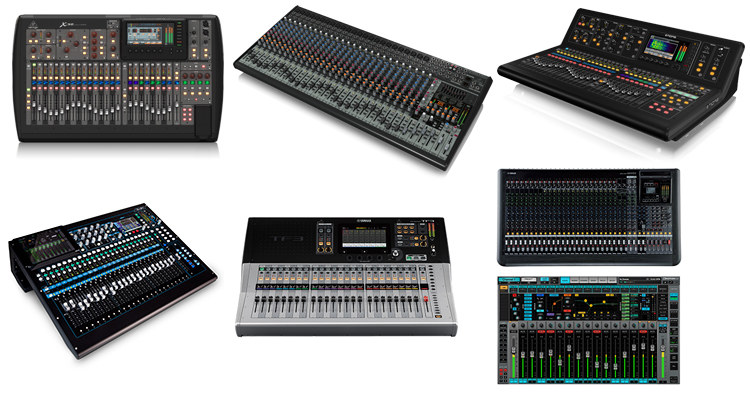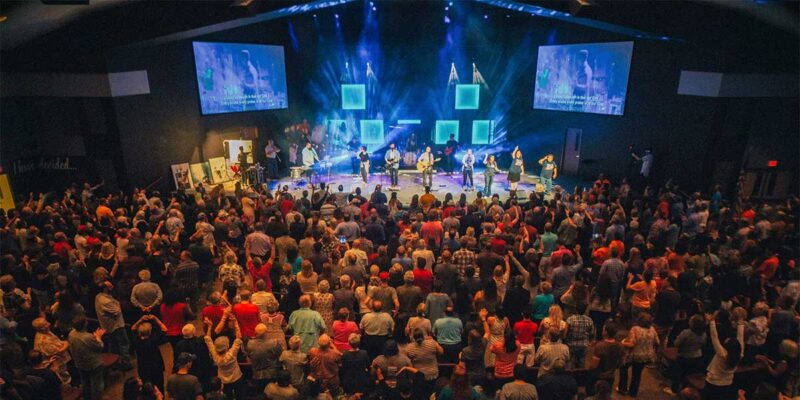Thou Shalt Have Faders
If your worship facility is part of the 65+ percent of houses of worship in North America with a congregation number less than 300 to 400 members, you are probably facing the inevitable quandary of what to update and/or replace in your AV system and when.
Since unlike the very large — or mega — facilities, you are not going to just rip it all out and change the whole thing in one purchase, you need to both sort through the options and prioritize your purchasing to stay within a budget.
Based on numerous surveys and reports in various trade journals, one of the oldest pieces of equipment is more than apt to be the audio mixing console. Why? Because the lifespan of that hardware platform is usually quite long and changes in technology do not come at the warp speed seen in other parts of the system such as speakers or video.
Additionally, it’s usually one of those items that neatly fit into the if it’s not broken ignore it category. And realistically, there’s nothing wrong with that approach, in general.
But (you knew this was coming), if you haven’t looked into consoles — mixers — in the last three to five years (or longer) the number of options has exponentially expanded and the cost associated with high quality, flexible and “smart” systems has dropped precipitously.
For reference, it is now feasible to acquire a 24-channel mixer, analog or digital, for a cost of between $50 and $100 per channel. With dozens of products in the $2-3K price window, there are more than enough options to meet almost any reasonable need or functional demand.
So perhaps it’s time to take a look at the options and consider updating the core of your audio system. There have been and continue to be a lot of words written about making the “change” from an analog to a digital platform; however, I would respectfully suggest that is the wrong question to be asking.
Frankly, the quality of almost any name brand product regardless of its circuitry or topology is going to be more than sufficient for the vast majority of applications. Of course, there are always exceptions, but let’s talk about the 90 percent of needs, not the 10 percent of specialized requirements.
Given the relative parity from a performance and technology standpoint, which name is on the face plate is not the first question, but the last, and it’s probably going to come down to price in the end anyway.
Asking the Right Questions or It’s Time for Coffee
What any worship space should be doing when it comes to deciding on what mixing system to purchase is a decision that must be based on the people who will use it and how it will be used — not who makes it.
As you start down the road to a decision on this hardware, the most important thing you can do is gather your team and have an open and frank discussion on what to do. Evaluating the capabilities of the people who will have to make this work, is not something you or any one person can or should do on their own.
Even if you’re working with (and you should be!) a quality integrator/consultant or dealer, they will naturally approach the topic from a technical perspective. That is not a negative as it can give you a lot of guidance and information on what is available, what’s new, who is using what and many other similar issues. But they are not going to be sitting behind this hardware for a service or event.
The people who will be are the ones who should have direct and unfiltered input into the decision. For example, if the members of your volunteer team are on the plus side of age equation (over say, 40), it is probable they would be more comfortable with something that has physical controls for each function rather than a selectable menu screen. However, the opposite may not be true. This is why you need to ask and present options for everyone to discuss freely and offer their ideas and potential concerns.
Let’s take a look at some of the options you could consider in the aforementioned price window. (Exact pricing will be dependent on how and where you purchase the product, but almost all of the products shown fit into the $2,000 to $4,000 range. There are far more available options than it is possible to show here, so do your research!). Online suppliers offer an easy and quick way to look at most of the available products sorted by price or features so take advantage of that vast catalog and collect a short list to focus on.

Even the virtual waves E-motion product is on average under $2,000.
Logically it may not possible to physically evaluate (at least on-site) all of the options, but any supplier should be able to facilitate a demo/loan of several choices so you and your team members can put hands on and get a ‘feel’ for how the particular product works, how its controls and functions present themselves to each team member and how instinctive and intuitive they actually are. Additionally you will able to know how well a particular product fits into the existing system’s signal flow, layout and physical space requirements/limitations.
Making sure you can fit the chosen product into the workspace is something often forgotten and is a very difficult problem to solve after-the-fact. Thus, these evaluations are critical to making a solid, workable long-term decision.
If You Need a Bit More
If your budget extends a little further you could move upward into something like the two consoles shown in the photos below, which are a bit more expensive and offer more extensive digital feature sets and options. The same evaluation requirements apply here as well especially if you are going to a virtual surface like the Slate or Waves products.

Rather than focusing on specific technical needs, what you should be doing as part of this evaluation and get acquainted process is to match your specific worship style and service requirements to the functions of the products and find out where the best fit exists.
It is quite likely that more than one product will meet the basic requirements and then it comes down to which one ‘feels’ best to the largest number of team members. (Remember to include the occasional part-time fill-in volunteers in the process, as well as any members of the worship team who may be involved or have specific needs, such as choir directors or music directors.)
No one product will ever make everyone 100 percent happy, so it’s the art of compromise to determine what comes closest to being the best solution for your particular worship style and service needs.





